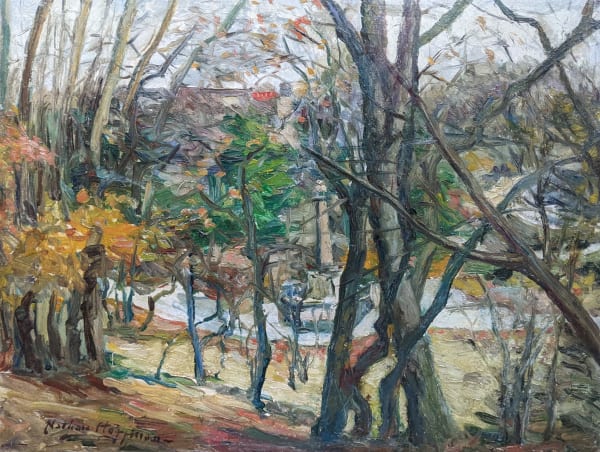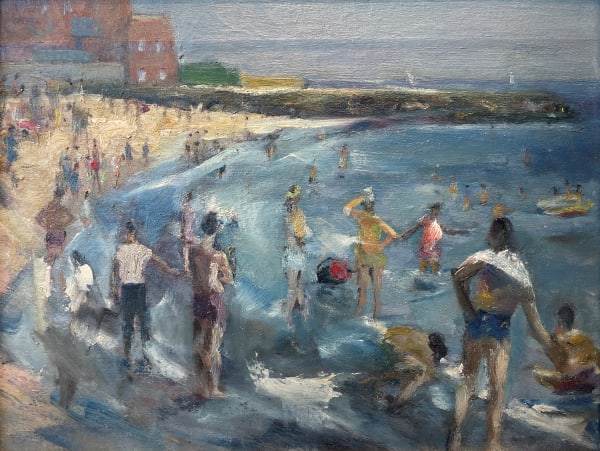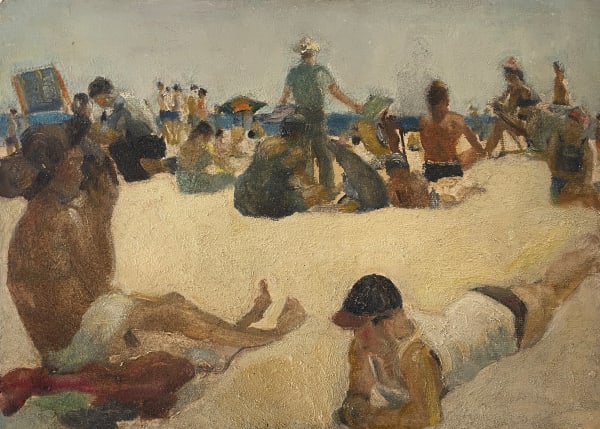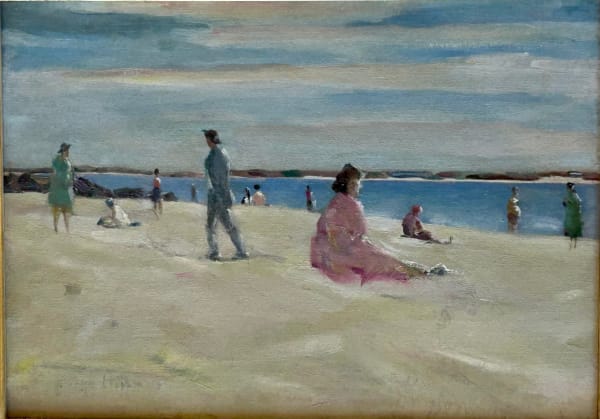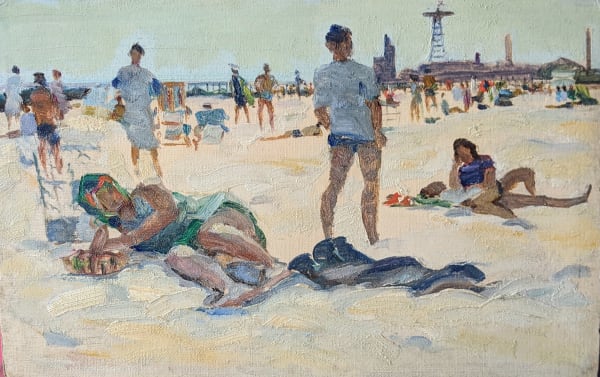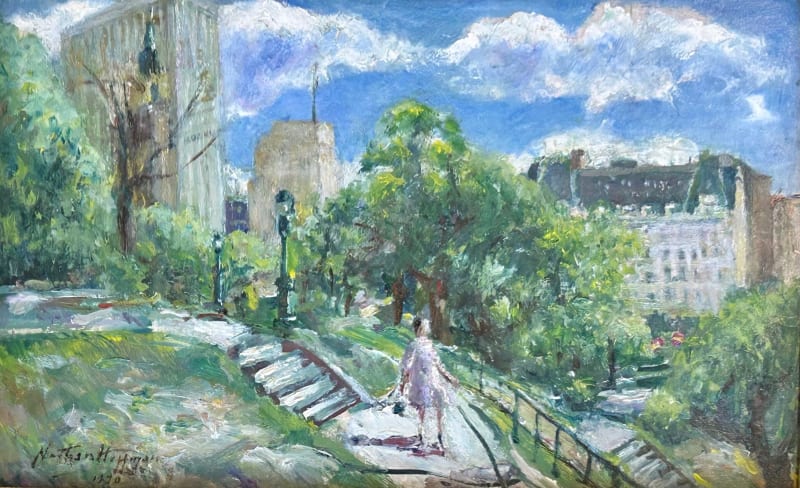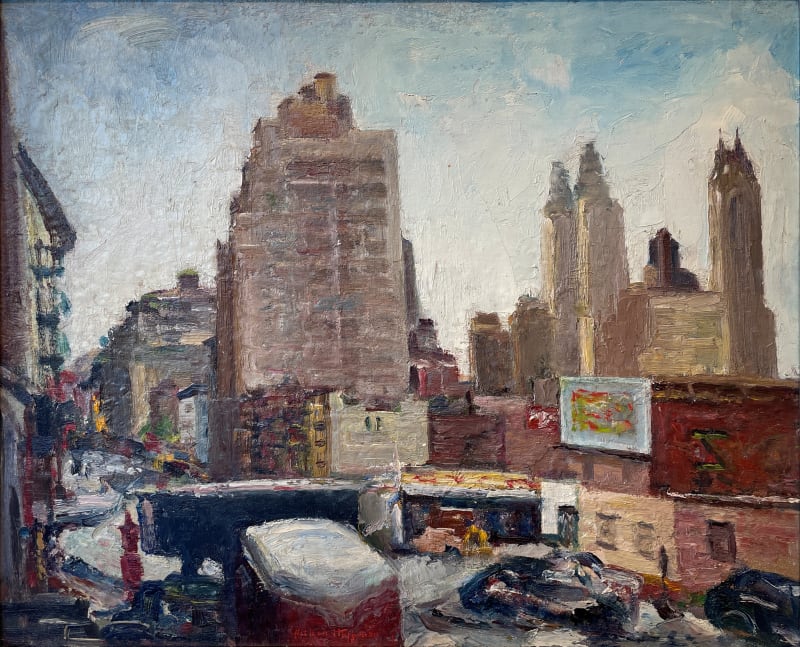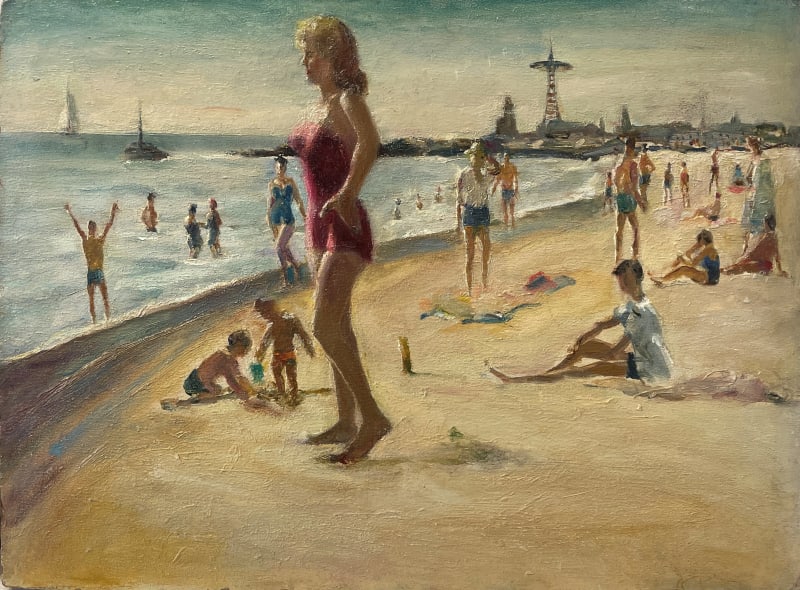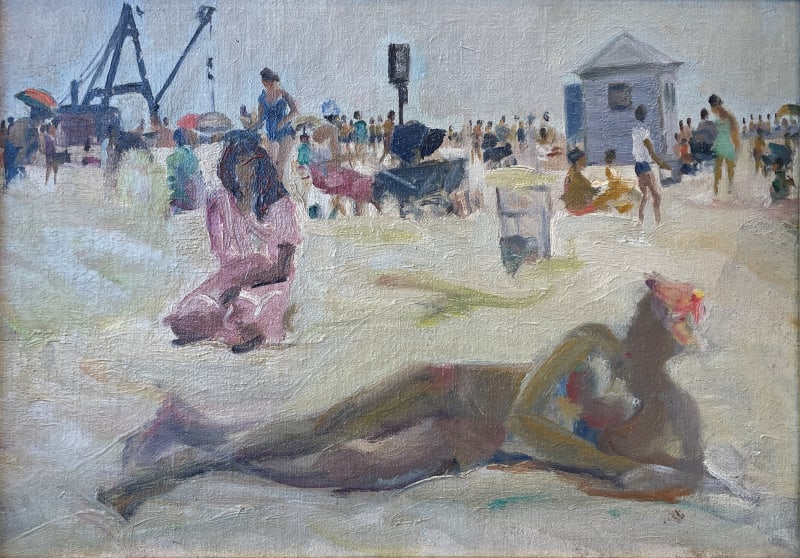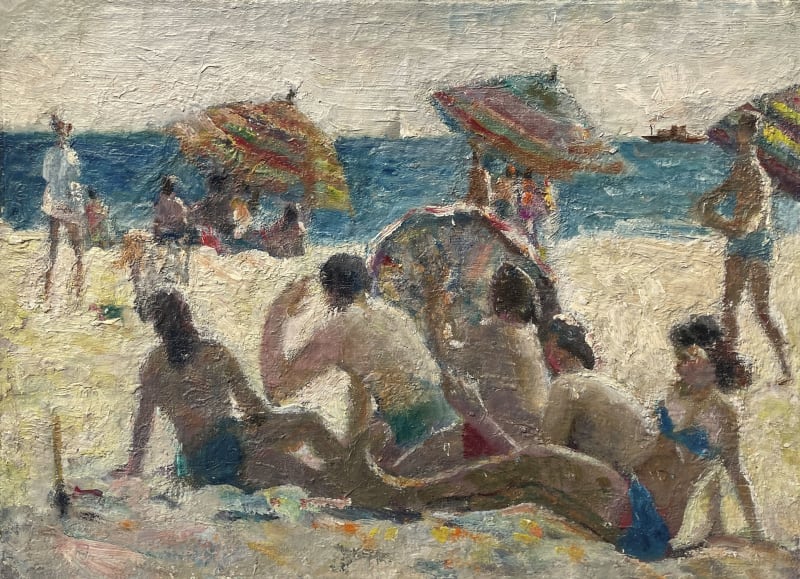-
 Prospect Park, 1941
Prospect Park, 1941 -
 The Beach
The Beach -
 Brighton Beach, July 31, 1946
Brighton Beach, July 31, 1946 -
 Coney Island Beach, July 9, 1941
Coney Island Beach, July 9, 1941 -
 Ocean Parkway Beach, October 2, 1941
Ocean Parkway Beach, October 2, 1941 -
 Central Park, Sherry Netherland Hotel, and Plaza Hotel, 1970
Central Park, Sherry Netherland Hotel, and Plaza Hotel, 1970 -
 Manhattan from the Rooftops, July 1, 1947
Manhattan from the Rooftops, July 1, 1947 -
 Brighton Beach, August 5, 1941
Brighton Beach, August 5, 1941 -
 Brighton Beach, 1941
Brighton Beach, 1941 -
 Brighton Beach, September 16th, 1942, 1942
Brighton Beach, September 16th, 1942, 1942
Born in Russia, the son of Friede (1878 – 1956) and Benjamin Hoffman (1878 – a. 1942). Benjamin was a dealer in mineral and seltzer water and the family resided on Snediker Avenue in Brooklyn, New York, just down the street from the home where George Gershwin (1898 – 1937) was born.
This area of Brooklyn, known as Brownsville, “witnessed the development of one of the largest communities of Eastern European Jewish immigrants during the last decade of the 19th century and the first two decades of the 20th century.” Today, little remains of this once thriving Jewish section of Brooklyn, which today houses many commercial and repair businesses.
Hoffman studied at the Art Students League of New York, the National Academy of Design and in the art program at Cooper Union. His work at the National Academy received praise, and in 1921 he was awarded the 2nd prize and an honorable mention from the John Armstrong Chaloner Paris Prize Foundation at the National Academy, which allowed the recipient to study in Paris, France for as long as five years. The following year he was awarded the 1st prize in the competition (with The Reform Advocate running the headline “Young Jew Wins Art Prize”) as well as Suydam Bronze Medal for his achievements in the Academy’s Men’s Night Class. In 1923 he was residing in Long Branch, New Jersey, when he was awarded 4th place in the Chaloner competition.
Early on, Hoffman exhibited his work throughout the city, including in 1925 with the recently organized Society of Independent Artists. He also received several solo exhibitions during the first part of his career, including one at Ferargil Galleries in 1929. In the spring of 1930 a solo exhibition of his portraits, including paintings and drawings, was held at at Babcock Galleries, where a reviewer noted: “Portraiture is obviously Mr. Hoffman’s specialty… his best work is characterized by a sensitive appreciation of character set down in a vigorous decisive statement.
Later that same year, in August, he participated in Babcock’s summer exhibition where reviewer Jerome Klein, writing for The Baltimore Sun, felt Hoffman’s and other artists work was already becoming old fashioned, remarking “…if an effort toward accomplishment is to be made, it must be in the language of today. It is for that reason that such contemporaries as Eugene Higgins and Nathan Hoffman, in this show, seem artists of a bygone era…”
By 1939 Hoffman had become a gallerist in addition to being a painter, operating the collective exhibition space “Sutton Gallery,” which was originally located at 358 East 57th Street. There Hoffman exhibited his own works as well as those created by other prominent New York artists including David Burliuk (1882 – 1967), Charles C. Curran (1861 – 1942), Louis Eilshemius (1864 – 1941), Ann Goldthwaite (1869 – 1944), Maurice Kish (1895 – 1987), Lawrence Lebduska (1894 – 1966), Bradford Perin and Ellis Wilson (1899 – 1977), among others. Hoffman continued to exhibit his and other artist’s works at the gallery through at least 1963, by which time it had moved to 236 East 60th Street. Even with his own space, Hoffman continued to exhibit elsewhere in the city, including The Jewish Club and at the Washington Square Artist’s Fair.
Nathan Hoffman died in Flushing, Queens, New York on Sunday, the 20th of May 1979 at the age of seventy-nine years. At present it is not known where his service was held, however he was interred at New Montefiore Cemetery in West Babylon, New York. An alternate birthdate of April 23, 1900 was noted on his World War I registration card, however nearly all other documents record as his birth occurring in February, indicating the April date is likely an error.
Most of what is known about Hoffman is through the several groupings of figurative, landscape and seascape paintings that have appeared on the market over the years. He seems to have been particularly interested in painting in Brooklyn at Brighton Beach, Coney Island and elsewhere in the environs of New York City. Many of these works are small in size, perhaps hinting at them being painted en-plein-air. His earlier works are impressionist in style, though during his later years some abstractions do appear. Hoffman signs his name fully on his paintings as “Nathan Hoffman” and they are often signed and fully dated on the verso as well.
Though there are undoubtedly other exhibitions in which Hoffman participated, those presently known include the following: Society of Independent Artists, New York, NY, 1925 (perhaps later as well); Ferargil Galleries, New York, NY, 1929 (solo); Babcock Galleries, New York, NY, 1930 (twice, spring solo & summer group exhibition); Allied Art Festival Exhibition, Spring Lake, NJ, 1935; Sutton Gallery, New York, NY, 1939 – 63 (solos & group shows); Podell Art Exhibition, New York, NY, 1939; The Jewish Club, New York, NY, 1945? (solo); Kettler Group Exhibition, New York, NY, 1953; Washington Square Artists Fair, New York, NY, (u.d.).
